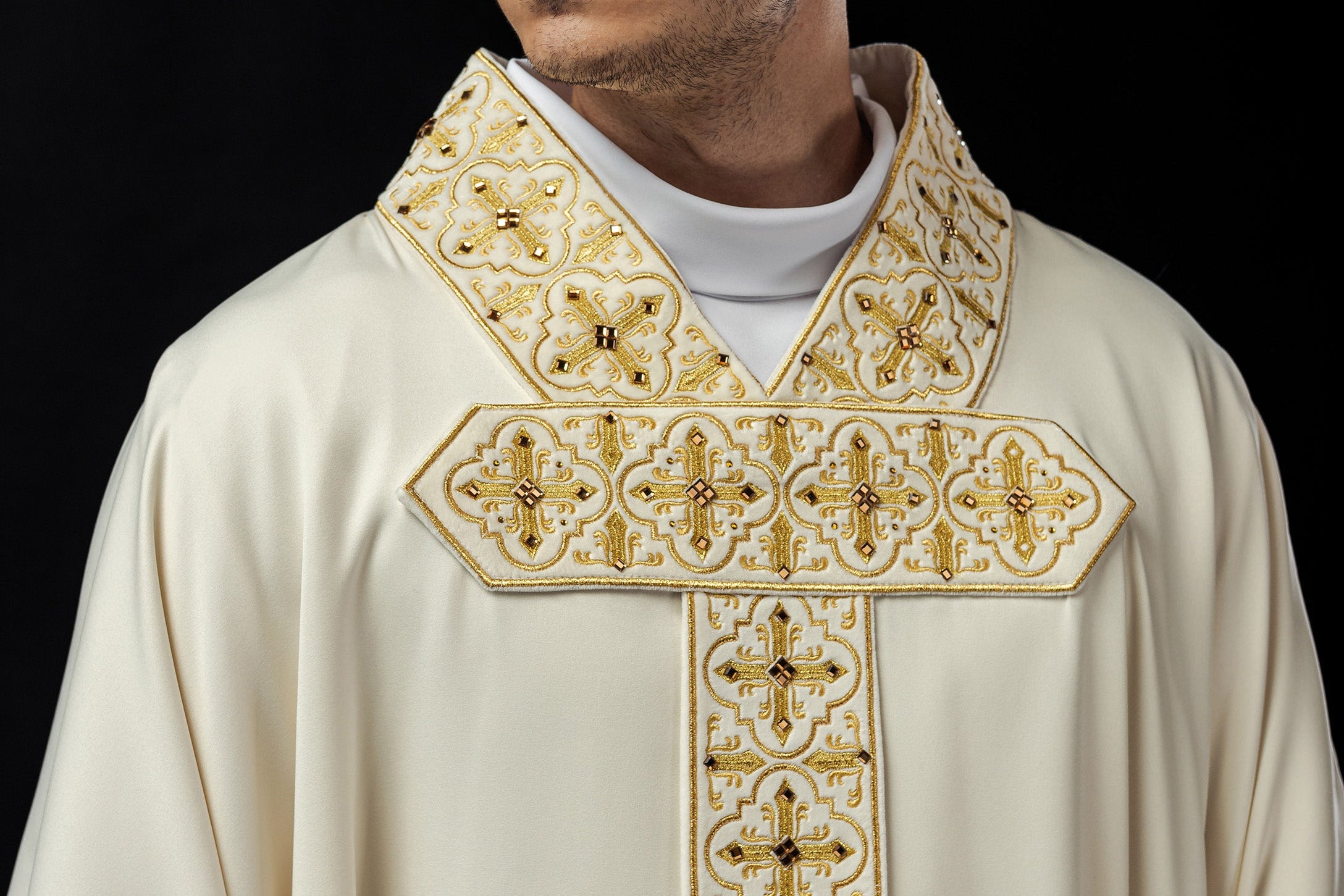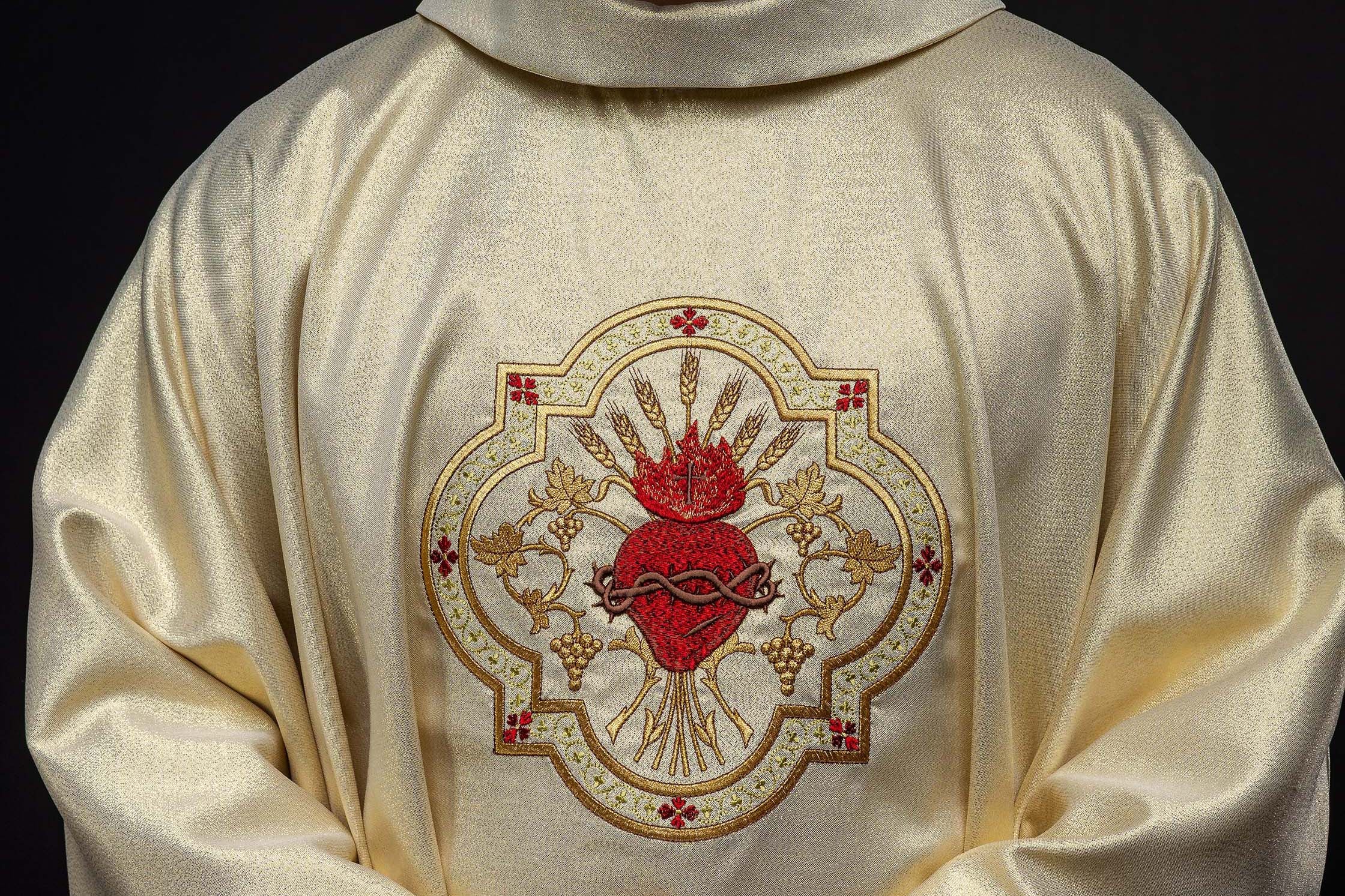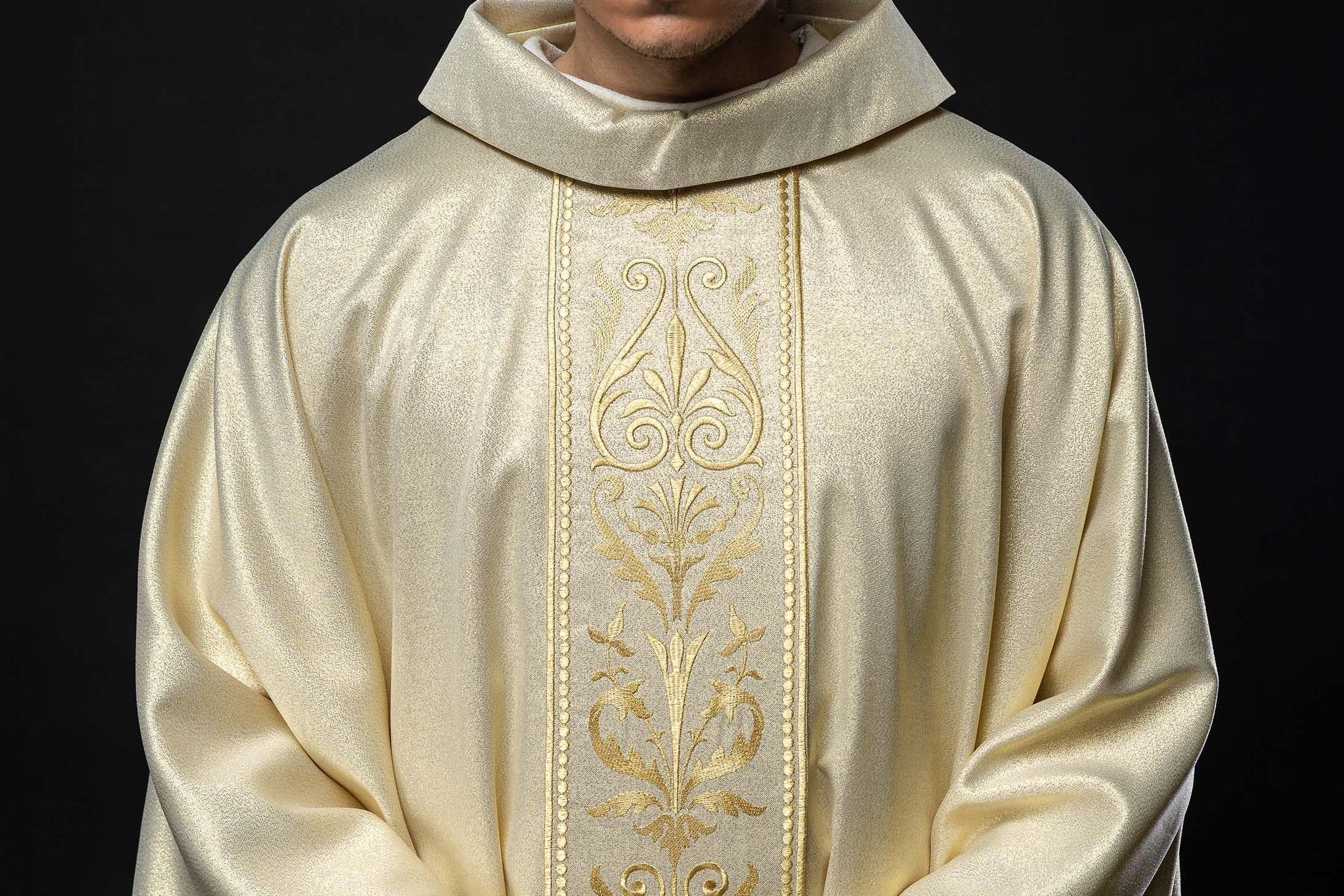
How to Prepare Your Parish for Corpus Christi?
How to Prepare a Parish for Corpus Christi? A Comprehensive Guide
The Solemnity of the Most Holy Body and Blood of Christ, commonly known as Corpus Christi, is one of the most important feasts in the liturgical calendar of the Catholic Church. Processions through the streets of towns and villages, symbolizing the public confession of faith and the presence of Christ in the Eucharist, gather crowds of believers. Preparing a parish for this event requires careful planning and the involvement of many people. This guide presents the key stages and aspects of the organization that will allow the parish to celebrate this feast with dignity and solemnity.
I. Liturgical and Spiritual Preparation
The foundation of every church celebration is its spiritual and liturgical dimension. Proper preparation in this area is crucial for a deep experience of the Mystery of the Body and Blood of Christ.
1. Liturgy of the Holy Mass
The Corpus Christi celebration begins with a solemn Holy Mass. It is crucial to ensure that the celebration is carefully prepared:
- Holy Mass: The Mass that begins the celebration should be celebrated with the utmost care. Ensure appropriate musical accompaniment, readings, and a homily referring to the meaning of the Eucharist and the procession.
- Liturgical Vestments: The priest and ministers should be dressed in festive liturgical vestments. Special attention should be paid to the chasuble, which on this day symbolizes Christ carrying the cross. At haftinausa.com, you will find a wide selection of chasubles for various liturgical occasions, including those ideal for Corpus Christi, made of high-quality materials and decorated with beautiful embroidery. Chasubles in white, symbolizing purity and joy in the presence of Christ, are available.
- Mass Intentions: It is worth ensuring that the Mass is celebrated with the appropriate intention, e.g., for the unity of the Church, for the faithful participating in the procession.
2. Catechesis and Preparation of the Faithful
Understanding the meaning of Corpus Christi is crucial for the full involvement of the faithful. Therefore, it is important to conduct appropriate catechesis:
- Homilies and Sermons: The priest should dedicate several sermons in the period preceding the celebration to explaining the meaning of the Adoration of the Blessed Sacrament, the symbolism of the procession, and the role of Christ as food for believers.
- Meetings for Parish Groups: Organize meetings for rosary circles, choirs, lectors, and altar servers to deepen their understanding of their role in preparing for and carrying out the celebration.
- Information in Parish Announcements: Regularly remind people of the dates of services, places of gathering before the procession, and the need for personal spiritual preparation.
II. Organization of the Procession
The Corpus Christi procession is the heart of this celebration. Its efficient organization requires taking into account many elements, from the route itself to the involvement of participants.
1. Procession Route
The choice of route is crucial and should be agreed upon with local authorities.
- Safety: The route should be safe for participants, free from excessive traffic. It is necessary to provide appropriate security.
- Altar Locations: Traditionally, the procession stops at four altars, where fragments of the Gospel are read and the hymn "Laudate Dominum" or other appropriate texts are sung. Care should be taken to prepare these places aesthetically.
- Route Decoration: Windows and balconies along the procession route should be decorated, e.g., with papal flags, white and yellow banners, flowers, or religious images. Residents are encouraged to participate in decorating their homes.
2. Preparation of Altars
Field altars are a key element of the procession, a place of adoration and prayer.
- Aesthetics: Altars should be beautifully decorated. White and gold dominate, symbolizing Christ. It is worth using flowers, leaves, candles, and fresh curtains.
- Liturgical Requirements: The Blessed Sacrament, a decorative altar cloth, candles, and a cross must be on the altars. At haftinausa.com, we offer a wide selection of embroidered altar cloths that are perfect for this role.
- Responsible Persons: Persons responsible for the preparation and decoration of individual altars should be designated, often parish councils, prayer groups, or specific families.
3. Involvement of Participants
The procession is a common confession of faith, so it is important to involve as many believers as possible.
- Children of Mary and Altar Servers: Children carrying banners, processional stands, a cross, and girls scattering flowers are an important element of the procession. Their clothes should be clean and festive.
- First Communion Children: Children who have recently received their First Holy Communion often take part in the procession in their festive attire, carrying candles or following in special groups.
- Choirs and Altar Servers: Provide musical accompaniment, sing Eucharistic hymns (e.g., "The Lord Be With You," "O Most Holy Blood"), and read the Gospel. It is worth providing materials with the lyrics of the songs.
- Singing and Prayer: Encourage all participants to actively sing and pray, which deepens the communal experience of the celebration.
- Distribution of Materials: Prepare songbooks or cards with the lyrics of songs and prayers.
III. Practical and Logistical Aspects
Good logistical preparation guarantees the smooth and safe course of the procession.
1. Organizing Team
A group responsible for coordinating all activities should be appointed.
- Division of Responsibilities: The organizing group should divide tasks: preparing the route, decorating altars, securing the procession, musical accompaniment, communication with local authorities, and preparing materials for participants.
- Coordination Meeting: Organize a meeting of the organizing team to discuss the details and schedule of activities.
2. Supplies and Decorations
It is necessary to gather appropriate supplies and decorative materials.
- Floristry: Flowers and green branches to decorate altars, the church, and the procession route.
- Banners and Processional Stands: Prepare or renew parish banners, processional stands, and canopies.
- Decorative Elements: Banners, flags, candles, textiles (altar cloths, curtains). It is worth paying attention to the offer of liturgical textiles, e.g., chalice veils with embroidery, which can be a decorative element in the church during the celebration.
- Sound System: In the case of longer routes or a large number of participants, it is worth ensuring an appropriate sound system.
3. Communication and Involvement of the Local Community
The involvement of residents and local services is crucial for success.
- Cooperation with Authorities: Obtain the necessary permits for the march, coordination with the police or other law enforcement services.
- Informing Residents: Notify residents of the procession route and ask them to decorate windows and balconies.
- Involvement of Services: Ensure the presence of law enforcement services and, if necessary, medical services.
4. Summary and Thanks
After the celebration, it is worth thanking everyone involved and summarizing the activities.
- Thanks: Express words of gratitude to the priests, altar servers, lectors, choirs, parish groups, people decorating the altars and route, as well as all participants in the procession.
- Reflection: It is worth reflecting on the course of the celebration and drawing conclusions for the future.
Preparing a parish for the Corpus Christi celebration is a process that involves the entire community. Thanks to careful planning, spiritual preparation, and good organization, you can create a unique atmosphere that will allow you to deeply experience this unique feast of faith. HAFTINA TEXTILE GROUP SP. Z O. O., offering high-quality liturgical vestments and church accessories, is a partner in this important work, supporting parishes in celebrating the most important liturgical events with dignity.
User Questions:
1. What are the most important elements of spiritual preparation for Corpus Christi?
The most important elements of spiritual preparation are deepening knowledge of the meaning of the Eucharist, reflecting on the presence of Christ in the Blessed Sacrament, frequent confession and Holy Communion, as well as personal and communal prayer for the intentions of the Church.
2. When should preparations for Corpus Christi begin?
Spiritual and organizational preparations should begin several weeks before the celebration, planning catechesis, meetings, and collecting the necessary materials.
3. Who is responsible for preparing the altars along the procession route?
Usually, designated parish groups are responsible for preparing individual altars, e.g., parish councils, prayer groups, catechetical homes, or specific families, in cooperation with the pastor.
4. What liturgical vestments are most appropriate for the Corpus Christi celebration?
For the Corpus Christi celebration, the most appropriate liturgical vestments are those in white, symbolizing purity, joy, and the presence of Christ. The chasuble is particularly important and should be festive and well-made. The haftinausa.com store offers a wide selection of chasubles, including those ideal for this celebration.
5. Can the procession route be decorated outside the designated altars?
Yes, parishioners are encouraged to decorate windows and balconies along the procession route, which emphasizes the public confession of faith and creates a festive atmosphere.
6. What Eucharistic hymns are most often sung during the Corpus Christi procession?
The most frequently sung hymns include "The Lord Be With You," "O Most Holy Blood," "At This Feast," "Praise the Lord," "It's Dark Everywhere," "Be Greeted, Living Host," "Beloved Son of the Father."
7. Who should carry the canopy over the Blessed Sacrament?
The canopy over the Blessed Sacrament is usually carried by four or more men, often representatives of various parish groups or important people in the community.
8. What are the duties of law enforcement services during the Corpus Christi procession?
Law enforcement services are responsible for securing the procession route, directing traffic, ensuring the safety of participants, and providing assistance if needed.
9. How can children be involved in preparing for and participating in the procession?
Children can be involved as altar servers, Children of Mary, scattering flowers, carrying banners, processional stands, or candles. It is also worth preparing special catechesis and materials for them.
10. Where can I find beautiful liturgical accessories to decorate altars and the church?
High-quality liturgical textiles, altar cloths, veils, burses, and other accessories can be found in the online store haftinausa.com, offering products from HAFTINA TEXTILE GROUP SP. Z O. O.
```




